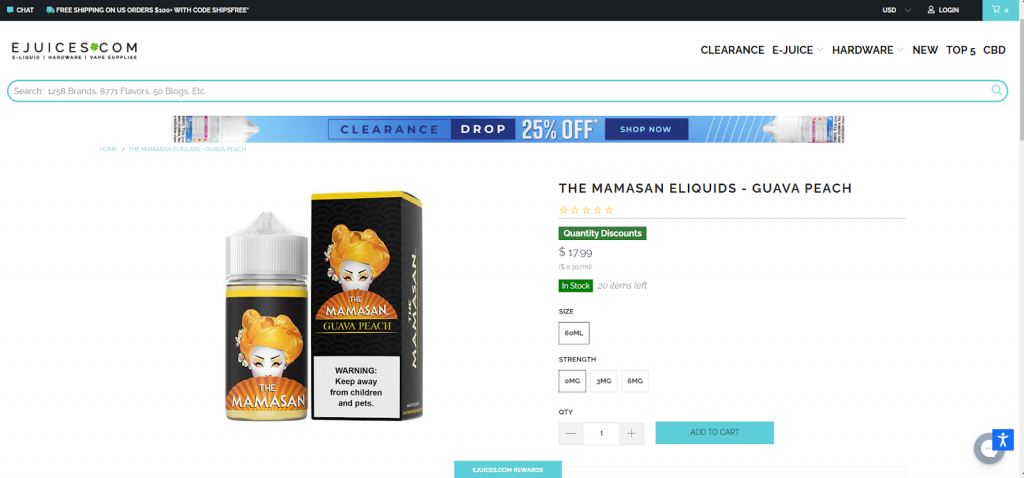
The B2B e-Commerce sector is a fast-growing one: it has outpaced the B2C sales back in 2019, and it has continued expanding ever since. In fact, according to Forrester, it’s expected to reach an astonishing $1.8 trillion by 2023. This will account for 17% of all B2B sales in the U.S.
In 2020, the global B2B e-Commerce value was estimated at $14.9 trillion, five times the value of the B2C market!
It’s clear that the growth opportunities in this market are enormous. But what exactly do you need to know to ensure your business-to-business electronic commerce thrives?
We’ve dug deep to find all the relevant and up-to-date information and create a comprehensive B2B e-Commerce guide so you are prepared to tap into this lucrative market.
Let’s explore the promising B2B e-Commerce field!
B2B E-Commerce Basics
What Is B2B E-Commerce: Laying the Foundation
Business-to-business electronic commerce – the sales of goods or services between businesses through online channels – is a type of business that comes with a set of advantages. Let’s cover them briefly before heading to the useful B2B e-Commerce website features.
Benefits of B2B eCommerce
The increasingly digital and fast-changing world we live in had a major impact on the trading industry. In a such challenging environment, B2B e-Commerce solutions provide numerous benefits for B2B businesses trying to survive and thrive.
We’ll list some of the key advantages of selling via an online platform:
- Tap into new markets and different time zones. Online channels aren’t limited to a particular country or a region. In fact, your online business is available for purchases 24/7, every day of the week, 365 days a year. Therefore, customers from different markets and timezones have no obstacles in buying your products. Aside from that, having an opportunity to research and buy online has become increasingly important to buyers, especially the Millenial business buyers.
- Improve your business efficiency. One of the main advantages of the B2B e-Commerce store is the ability to streamline your sales processes. It eliminates much of the manual administrative work and automates otherwise time-consuming processes. It also reduces the possibility of errors.
- Improve the sales process. B2B platforms enable your buyers to self-serve, order and reorder, and more. They can do all that on their terms – while getting a personalized experience and pricing. And with the right and sufficient information about your products and a simple order process, your online sales platform will bring substantial benefits to your business.
- Leverage big data. Having information about customers’ purchasing behavior at your fingertips is one of the main B2B online store benefits. Business owners can collect and learn from data to enhance customer experience, improve the way their site works and identify the most important marketing channels.
- Adopt a customer-centric approach. With e-Commerce platforms’ personalization capabilities, you can customize the shopping experience for your buyers – from the way your storefront looks, to the selection of products that get shown first.
What to Be Mindful of When Choosing a B2B E-Commerce Platform?
When it comes to the B2B e-Commerce platforms, there’s much more to them than just managing the sales. The best of the best come with amazing speed and security, CRM integrations, an abundance of payment options, personalization capabilities, and conversion optimization.
A comprehensive set of tools to streamline purchasing, billing, and support for B2B shoppers is yet another advantage of using a great B2B e-Commerce platform.
Let’s take a look at what you should take into consideration when choosing a B2B e-Commerce platform:
- Customization and multiple options regarding the pricing, payment, and ordering
- Personalization options and prioritizing user experience like offering customer-specific pricing
- Self-service functionality – so your B2B buyers can get information they need and resolve issues on their own
- Available restriction options like hiding prices from B2C customers for example
Some of the best and the most prominent e-Commerce platforms include BigCommerce, Shopify, WooCommerce, Magento, NetSuite, IBM Digital Commerce, and NuOrder.
B2B E-Commerce Website: Essential Features
If you’re running a B2B business, you’ll definitely want to know what features your site needs to have to make an impact. A well-implemented B2B platform is more likely to reach and engage new customers.
So, what are the major site features that will enhance the customer journey on B2B e-Commerce platforms?
Let’s take a deeper look!
Go With a Simple B2B E-Commerce Design
Decluttered design is what you should aim for. Too much stuff going on can confuse your site visitors and make it more difficult to pinpoint your CTAs. For the optimal B2B e-Commerce design make sure your CTAs and your products stand out from the moment a site visitor lands on your site.
In short: avoid clutter as it distracts the buyers.
Don’t Overcomplicate Your Menus
If you’re running a large shop with hundreds of different products, it’s easy to fall into this trap and go with numerous categories. Although this may seem like a good idea, it’s actually counterintuitive. More often than not, it will confuse your prospective buyers.
Therefore, it’s best not to be super-specific. Instead, categorize your products by using broader terms.
Implement a Superb Onsite Search Functionality
If you’re running a large B2B e-Commerce store, it may be challenging for your customers to quickly find what they are looking for. Whether you have a large catalog or not, you want to aid your prospective clients in their search and buying the right goods.
To enhance your onsite search functionality, implement word auto-completion, and provide your site visitors with a product images preview. A preview of the price is a nice addition too.
Aside from that, B2B e-Commerce sites can add more value to the customers by including more elements in search results. Depending on your business’s offer, you can choose to display a manufacturer or brand, part or full product title, product type, and/or Item details (e.g., width, function, etc.).
Provide Detailed & Sufficient Information About Your Products
Having sufficient and informative details about your products can encourage potential B2B buyers to make a purchasing decision. When buying online, buyers can’t see or touch and inspect products as they would in physical shops. This lack of real-life experience can be overridden by using informative product descriptions.
Aside from compelling textual content, adding 3D models and product videos is another way to boost your conversions. So are virtual showrooms.
Use Product Videos to Engage & Convert
A few product video types might come in handy in increasing your purchases: classic product videos, demo and explainer videos. Standard product videos are designed to show potential customers the product from all angles. Their purpose is to Demo videos are used to show off a particular product in action – while someone is using it. Explainer videos are a bit different – they are used to describe how a product works, and also to promote your brand by sharing its story.
Take Your B2B Business to the Next Level With 3D Visualization Solutions
An interactive showcase of your products is a great way to increase buyer confidence as well as your conversions. In fact, 3D models are the closest to being in a brick-and-mortar store. But today’s tech capabilities have moved beyond just displaying 3D models. There are more options at your disposal to enhance your e-Commerce experience.
Virtual Showrooms: Mimic the Experience of Real Showrooms
To stand out in a competitive B2B market, B2B businesses can also opt to deliver interactive experiences to their customers. Today’s cutting-edge technology can help you create an engaging and immersive experience and support buyers’ online journey.
This new way of interacting with your retailers allows them to view your products as if they were in front of them.
Make Sure Your B2B E-Commerce Store Is Mobile-Friendly
Mobile devices have overtaken the desktop ones, so it’s no wonder mobile commerce is taking the lead. According to some estimates, global consumer mobile spending will hit $728 billion by 2025. Therefore, it is an absolute imperative to have a B2B online shop that’s mobile-responsive and optimized for mobile devices.
Running a Successful B2B E-Commerce Website: Best Practices
B2B e-Commerce sector is a thriving one, with an abundance of opportunities. However, the competition is fierce. To ensure your B2B e-shop stands out, take time to understand and adopt proven best practices within this market.
Key Differentiator for B2B Buyers: the Customer Experience
Some things never change, no matter the type of online business, and this is one of those features. Heavy focus on customer experience can make a huge difference for your B2B business. The way your e-Commerce store works for your B2B customers, from start to finish, needs to be impeccable and user-friendly.
The overall experience needs to be hassle-free and enjoyable in order to turn site visitors into repeat buyers and optimize their retention.
A great user experience (UX) across different devices is a must-have, as well as superb sales and customer service.
Personalized Solutions: Create Better Experiences for Your Buyers
Personalized solutions have become the new norm in the world of B2B e-Commerce. The ability to differentiate between customers based on their past purchases, or customer lifetime value is critical. For example, depending on customer type, you may want to offer dynamic pricing.
Segmenting customers based on various criteria (like location or purchasing capacity) can ensure a number of benefits to B2B e-Commerce businesses. It allows them to offer targeted promotions and incentives. In return, such tactics can boost sales and also improve customer satisfaction.
From basic personalization (using a customer’s name on login) to personalized on-site content, or dynamic prices, this approach is essential in improving B2B customers’ experience and establishing long-term relationships.
Simplify Wholesale: Cater to the Traditional Customers
For certain B2B customers, simplicity is key. For instance, B2C outlets, independent retail stores, and small-to-medium franchises may prefer the digital version of the spreadsheets and faxed order forms, simply because it’s what they are familiar with.
If these are the types of customers you serve, make sure to cater to them by making wholesale as easy as possible. Sometimes, it will require human guidance and advice on purchasing. But if you manage to meet their specific needs, you’ll see your business thrive too.
Payments and Ordering: Easy Checkout and Payment Options
Quick Order Tools and Reordering Tools
With quick order tools, buyers who know what they are looking for can complete their orders faster. They can add multiple products to the cart without hassle. On the other hand, many B2B customers repurchase the same product over and over again. Make the reordering process simple by utilizing a reorder tool. This way, repeating B2B buyers can quickly place their order without having to find and add items to the cart from scratch.
Handling Payments in Various Currencies
In today’s digital environment, borders are becoming vague and irrelevant. Modern buyers are sourcing globally, therefore accepting payments in any currency should be a priority for B2B e-Commerce businesses.
Provide Clarity on Associated Costs
Make the purchase as transparent as possible including its full cost and shipping charges. When it comes to cross-border transactions, it’s vital to display accurate information about associated costs like duties and taxes. This is an efficient way to establish trust, improve customer satisfaction, and turn them into repeat and loyal customers.
Examples of Great B2B E-Commerce Sites
To help you better understand what makes a great customer experience and a successful B2B e-Commerce site, let’s examine a few outstanding ones and learn from the best.
1. Chocomize: Boost Rankings and Revenue With On-Page SEO Best Practices

Chocomize is a brand that makes customizable food gifts like personalized chocolates and other corporate gifts.
The website’s homepage is ranked number one on Google for a number of relevant keywords like “custom chocolate”, “personalized chocolate”, and “custom chocolate bars”.

What makes this site great and performing so well?
Well, the consultants who have worked on the site have prioritized a few key improvements in the On-Page SEO field. First of all, they focused on priority pages’ meta tags. Then they moved on to the content. They’ve expanded it and improved it in such a way that it was transformed into a kind of in-depth presentation. Their purpose was to navigate users to specific product categories on the site.
In the last step, they’ve optimized their internal linking strategy in order to boost the domain authority of the pages they’ve prioritized for ranking.
On-page SEO best practices are the staple of search engine optimization for any business. Placing product keywords in the URL of the page, page titles, H tags, body copy, and alt image tags is still relevant.
2. eJuices: Lower the Risk for the Resellers

The eJuices brand sells vape supplies: vaping juices and vaping devices. But what differentiates this particular business from dozens of similar ones? Its commitment to supporting its retail partners.
The virtual warehouse has made a huge difference for this business, in addition to several customer-friendly features. The site offers a robust search, and an appealing rewards program, among other things.
And the company has managed to elevate the user experience even more! It provided its clients with an explainer video on how this virtual warehouse works and how to reduce the risk for the sellers.

The lesson here is to take time to understand the ins and outs of your niche, but also to go the extra mile and support your retail partners properly.
Building Successful B2B E-Commerce Solutions
The evolution of the entire world to a more tech-oriented environment has reshaped the way businesses work. The transformation of businesses has affected the B2B sector as well. The B2B e-Commerce has become indispensable in acquiring new customers, tapping into new markets, and ultimately: increasing sales and revenue for your business.
E-Commerce Solutions That Fit Your Business Needs
From retail startups and small shops to large grocery chains, the experienced team at Concise Studio will handle your project and adapt to your business needs. Our personalized approach to building B2B stores is the key to their success. We develop flexible, easy-to-manage e-Commerce solutions that will help you grow and outperform the competition.Ready to tap into the lucrative B2B e-Commerce space? Get in touch with us today and let’s discuss your project!